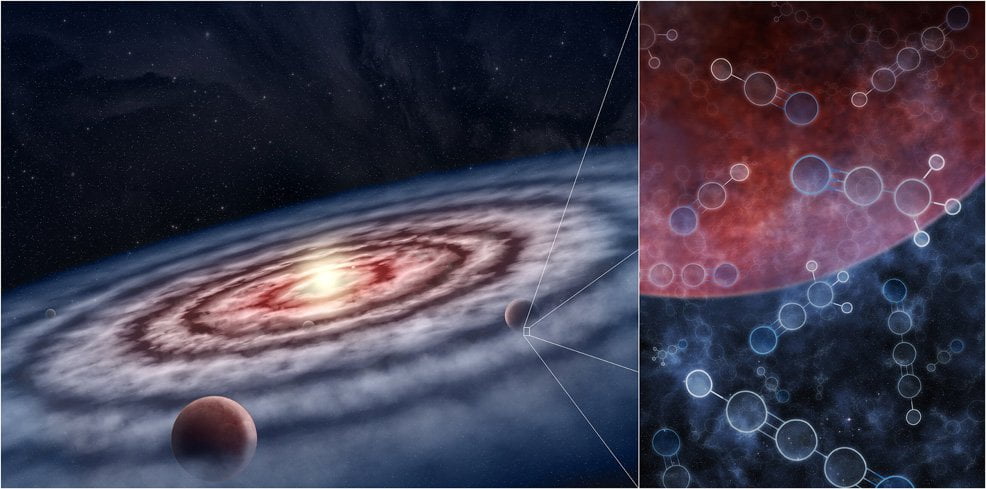Three of the large organic molecules necessary for the formation of life have been detected around the stars at a level up to 100 times higher than that predicted by the models.
Analysis of unique “fingerprints” in the light emitted by material around young stars has revealed “significant reservoirs” of large organic molecules needed to form the basis of life. Results that speak clearly: the chemical conditions that produced life on Earth are much, much more widespread throughout the Galaxy.
Let's start with the basics

The astrophysicists led byUniversity of Leeds, in the United Kingdom, have identified the large organic molecules in the protoplanetary disks surrounding newly formed stars. A similar disk would have once surrounded our young Sun, forming the planets that now make up our Solar System. The presence of these molecules is significant because they are, as mentioned, important bases. Stepping stones between simpler carbon-based molecules such as carbon monoxide, which is found abundantly in space, and more complex molecules needed to create and sustain biology.
The team, in collaboration with scientists from 16 other universities around the world, collected data fromAtacama Large Millimeter / submillimeter Array (ALMA). This cluster of 66 dishes, built in the Atacama Desert in northern Chile in 2013, is the world's most expensive and powerful ground-based telescope for studying the Universe at submillimeter and millimeter wavelengths.
Where are the ingredients of life
“These large, complex organic molecules are found in various environments in space,” he says John Ilee, the researcher who led the study. “Laboratory and theoretical studies have suggested that these molecules are the 'rough building blocks' for building the essential components in biological chemistry on Earth. They create sugars, amino acids and, under the right conditions, even the components of ribonucleic acid (RNA).”
However, many of the environments in which we find these complex organic molecules are quite far from where and when we think planets are formed. We wanted to understand more about where exactly and to what extent these molecules were present in the birthplaces of the planets.
John Ilee, University of Leeds
The power of a magnificent telescope is a revelation: the basics of life are 100 times greater than expected
By combining its network of more than 60 antennas, the ALMA telescope can detect very weak signals coming from molecules in space. Each molecule emits light at distinctly different wavelengths producing a unique spectral “fingerprint,” allowing scientists to confirm the types of molecules and study their properties.
“The power of ALMA has allowed us to measure for the first time the distribution and composition of material that is actively building planets around nearby young stars,” says Dr. Catherine Walsh, study co-author. “The telescope is powerful enough to do this even for large, complex molecules that are the basis of life.”
What did the team look for?

Protoplanetary disks, all bearing the signatures of the formation of planets taking place within them, range between 300 and 500 light years from Earth. The research team looked for three molecules: cyanoacetylene (HC₃N), acetonitrile (CH₃CN) and cyclopropenylidene (c-C₃H₂).
We have found larger organic molecules than expected, a factor of 10 to 100 more, located in the inner disks on scales of the Solar System, and their chemistry looks similar to that of comets in the Solar System.
John Ilee, University of Leeds
Extraterrestrial life: extremely probable
The key result of this work shows that the seven bases needed to seed life on our planet are also found around other stars. Even more than here. “It is possible that the molecules needed to start life on planets are readily available in all planet-forming environments. environments,” says Dr. Walsh.
For their next work, the researchers want to investigate whether even larger and more complex molecules exist in protoplanetary disks.
“Having found molecules like these in such great abundance, our current understanding of interstellar chemistry suggests that even more complex molecules should also be observable,” says Dr. Ilee.


